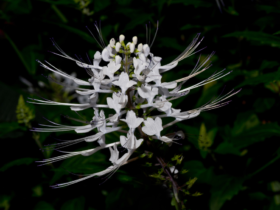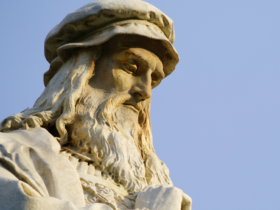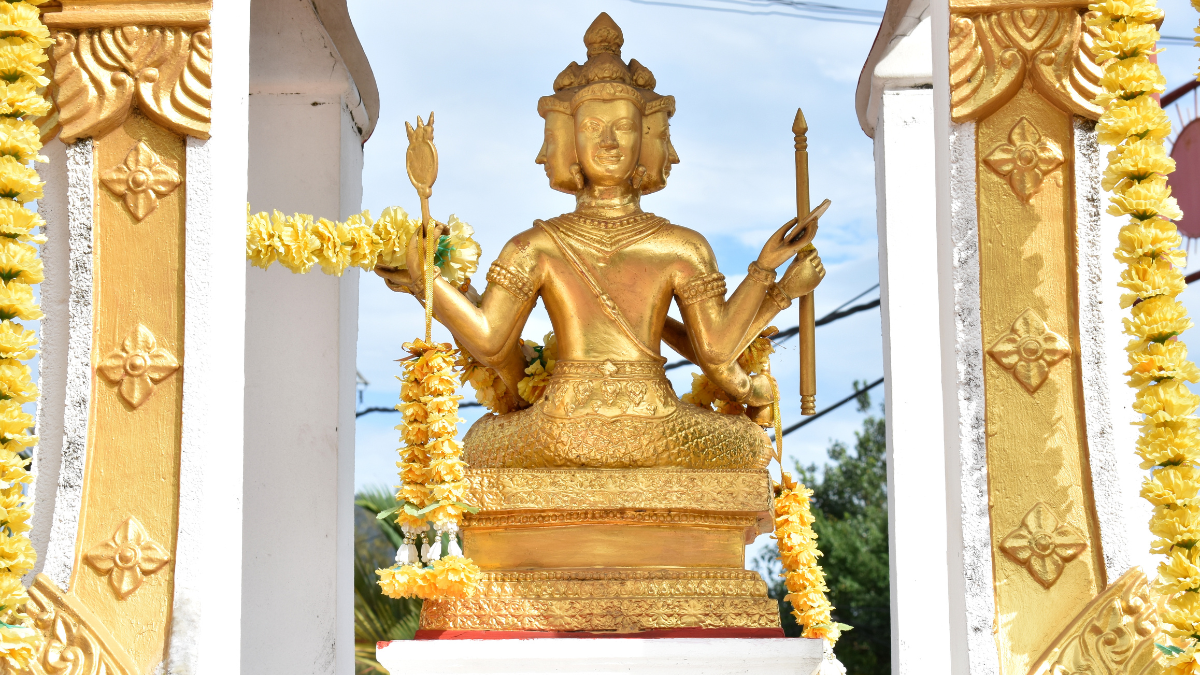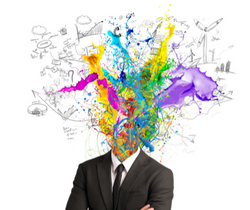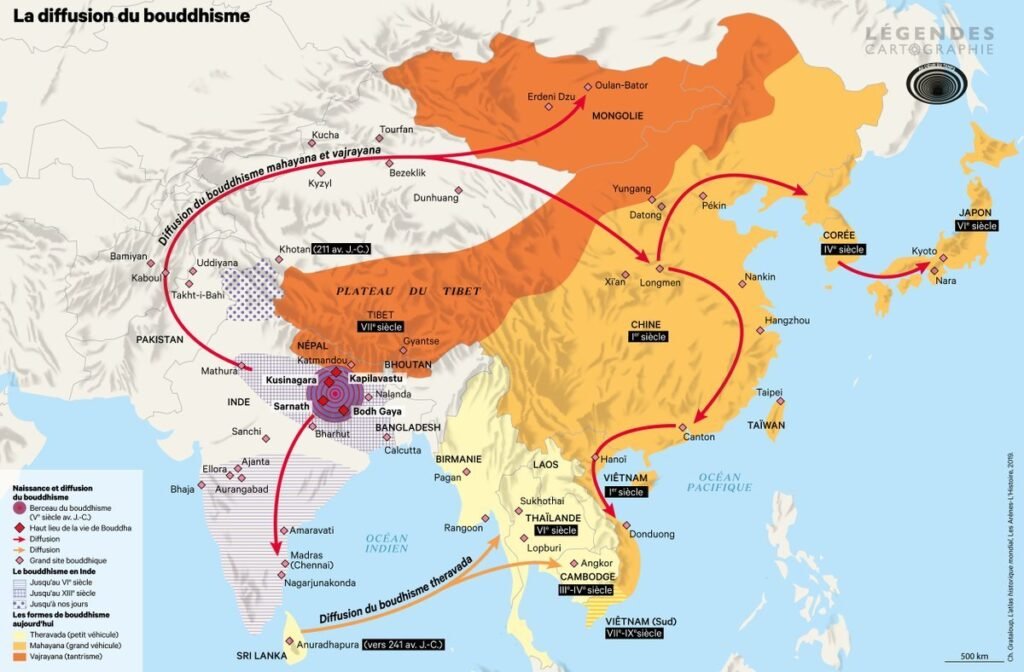
The Four-Faced Buddha, a revered icon in Southeast Asian culture, embodies a blend of historical richness, spiritual depth, and artistic beauty. This article delves into the fascinating world of the Four-Faced Buddha, unraveling its symbolism, exploring its historical roots, and understanding its role in modern worship.
The Evolutionary Journey of the Four-Faced Buddha: From Hindu Roots to Buddhist Icon
The history of the Four-Faced Buddha is a fascinating tale of religious syncretism and cultural adaptation. Originating in the ancient Hindu traditions, the concept of a four-faced deity was initially associated with Brahma, the creator god in the Hindu pantheon. Brahma’s four faces were said to look in the four cardinal directions, symbolizing his omnipresence and omnipotence in the creation process.
As Buddhism began to spread across Asia, it interacted with existing Hindu beliefs and practices. This interaction was particularly significant in regions like India, Cambodia, and Thailand, where both religions coexisted and influenced each other. During this period, the imagery and symbolism of Brahma began to be incorporated into Buddhist art and iconography, leading to the emergence of the Four-Faced Buddha as a distinct figure in Buddhist tradition.
This syncretism is most evident in the art and architecture from the 6th to 8th centuries, a period marked by a rich intermingling of Hindu and Buddhist influences. In Cambodia, for instance, the Bayon Temple in the Angkor Wat complex is a prime example of this blend. The temple features numerous serene and smiling faces, often attributed to the Bodhisattva Avalokiteshvara but also interpreted as representations of the Four-Faced Buddha, demonstrating the overlap between Hindu and Buddhist iconography.
The adaptation of the Four-Faced Buddha into Buddhism also symbolized the religion’s inclusive and adaptive nature. Unlike the static nature of Brahma in Hinduism, the Buddhist interpretation of the Four-Faced Buddha evolved, with each face coming to represent different aspects of Buddhist teachings and principles. This evolution reflected the dynamic and transformative nature of Buddhist philosophy.
Over the centuries, the Four-Faced Buddha became deeply entrenched in the spiritual fabric of Southeast Asian countries. It transcended its original mythological roots to become a symbol of protection, peace, and enlightenment, integral to Buddhist practice and worship in the region.
The Origin and Mythology of the Four-Faced Buddha
The concept of the Four-Faced Buddha is rooted in ancient Hindu and Buddhist traditions, symbolizing the confluence of these two major religions. Historically, the figure is often linked to Brahma, the Hindu god of creation. As Buddhism spread throughout Asia, this figure was integrated into Buddhist iconography, gaining unique interpretations and significance.
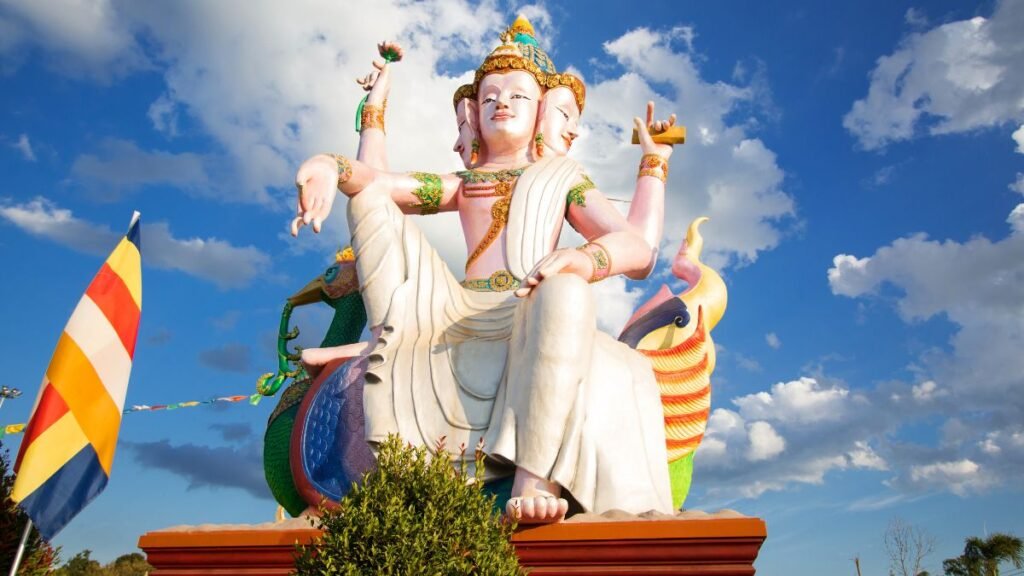
Symbolism and Interpretation
Each of the four faces of the Buddha is believed to represent different aspects and teachings. These faces, gazing in the cardinal directions, symbolize omniscience – the ability to perceive all things in all directions. The faces are commonly interpreted as depicting kindness, compassion, sympathy, and impartiality – key virtues in Buddhist teachings.
Comparative Religious Perspective
The Four-Faced Buddha occupies a unique place in the tapestry of Asian religious traditions, illustrating a profound interplay between Hinduism and Buddhism. In Hinduism, the concept originally centered around Brahma, representing the universal aspects of creation and knowledge. Each face of Brahma in Hindu iconography symbolized the completeness and omnipresence of his creative power. Conversely, in Buddhism, the adaptation of the four-faced deity took on more diverse and fluid meanings. Rather than focusing on creation, the Buddhist interpretation emphasizes the omniscient nature of the Buddha, with each face reflecting different teachings and qualities such as compassion, wisdom, protection, and benevolence. This distinct interpretation in Buddhism highlights the religion’s emphasis on personal enlightenment and ethical living. The contrast between the Hindu and Buddhist perspectives on the same iconographic element underscores the rich, dynamic nature of religious symbolism in Asia. It also reflects how religious ideas can be reinterpreted and recontextualized in different spiritual frameworks, allowing the same symbol to hold varying but equally profound meanings across cultures and beliefs.
Cultural and Religious Significance
In various Asian cultures, particularly in Thailand and Cambodia, the Four-Faced Buddha holds significant religious importance. It is not only a symbol of divine presence but also a reminder of the moral and ethical paths in life. The figure is central in rituals and is revered for bringing good luck, peace, and protection to worshippers.
Art and Architecture
The representation of the Four-Faced Buddha in art and architecture is a testament to the artistic heritage of Southeast Asia. From grand temples to intricate sculptures, the depictions of this deity vary widely, each capturing the essence of local artistic traditions and religious beliefs.
Contemporary Relevance and Worship
In modern times, the Four-Faced Buddha continues to be an integral part of spiritual life in many Asian communities. The figure is not only relevant in religious contexts but also appears in popular culture, symbolizing peace and spiritual awakening. Worship of the Four-Faced Buddha involves various rituals, including offerings and prayers, reflecting a deep-rooted connection between the deity and daily life.
Major Temples and Pilgrimage Sites
There are several major temples dedicated to the Four-Faced Buddha, attracting thousands of pilgrims and tourists annually. The Erawan Shrine in Bangkok and the Bayon Temple in Cambodia are among the most notable. These sites offer a glimpse into the spiritual and cultural significance of the Four-Faced Buddha, serving as centers for worship and cultural exchange.
The Enduring Appeal of the Four-Faced Buddha
The enduring appeal of the Four-Faced Buddha lies in its ability to transcend religious boundaries, becoming a symbol of universal virtues and spiritual wisdom. Its presence in various cultures underscores the interconnected nature of Asian religious traditions.
Conclusion
The Four-Faced Buddha stands as a beacon of spiritual enlightenment and cultural heritage. Its multifaceted symbolism, historical roots, and contemporary relevance make it a fascinating subject for both devotees and those interested in Asian culture and history.
Also read about our post on Unlock the Health Benefits of Kombucha




